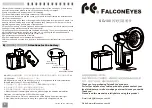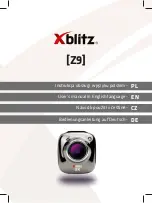
BOBCAT Hardware User’s Manual
Imperx, Inc.
Rev. 2.0.6
6421 Congress Ave.
11/20/2012
Boca Raton, FL 33487
+1 (561) 989-0006
133 of 265
2.14 DYNAMIC BLACK LEVEL CORRECTION AND TAP BALANCING
2.14.1 Black Level Correction
As was described in the Gain and Offset section, the reference black level on each
CCD output fluctuates around 0V. The AFE offset correction works on the entire
image and if there are noise fluctuations on a line level, the AFE is not capable of
correcting them. The camera has a built in dynamic signal-to-noise correction feature
to compensate for this effect. In the beginning of each line the CCD has several back
(masked) columns. The dark level for each tap is sampled over several of these
masked pixels and the average per tap black level floor is calculated for each frame.
The average floor level for each tap is then subtracted from each incoming pixel
(from the corresponding tap) from the next frame.
2.14.2 Tap Balancing
Since the camera has two separate video outputs coming out of the CCD, there is
always some offset misbalance between the video outputs. Thus, changing the AFE
gain leads to a change in the offset level and to a further misbalance between the two
video signals. To correct the balance between two signals at any particular gain,
BOBCAT series of cameras have static and dynamic balancing algorithms
implemented in the firmware. The algorithms compares the black and bright levels
of the adjacent pixels around the tap line, and adjusts the gain and offset for each tap
accordingly, until the balance has been reached. The selection to use static or
dynamic balancing depends on the application. Please note, that if AGC is enabled, it
is strongly recommended to use static balancing, because the dynamic balancing can
interfere with the AGC algorithm.
















































